The water dispenser in a fridge may stop working due to blockage in the water line or a malfunctioning water valve. A fridge with a built-in water dispenser is a convenient feature that allows you to easily access filtered water.
However, it can be frustrating when the water dispenser stops working. There are a few reasons why this might happen. One common issue is a blockage in the water line, which can occur due to mineral deposits or frozen water.
Another possibility is a malfunctioning water valve, which may need to be replaced.
In this guide, we will explore the causes for why water dispenser stops working in fridge in more detail and provide some troubleshooting tips to help you resolve the problem.
By understanding the potential reasons behind a stopped water dispenser in your fridge, you can take appropriate steps to fix it and enjoy your chilled water once again.
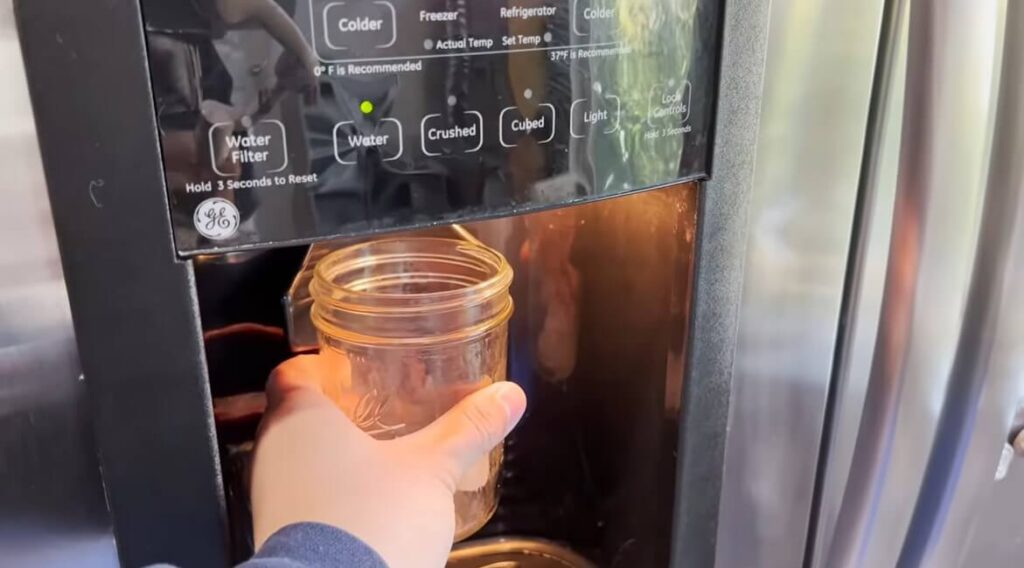
Why The Water Dispenser In Your Fridge Stops Working?
One possible short description could be: “discover the reasons behind a malfunctioning water dispenser in your refrigerator and learn how to troubleshoot it effectively.”
Is there anything more frustrating than a malfunctioning water dispenser in your fridge? You rely on it to provide fresh, cold water whenever you need it, but suddenly, it stops working. Don’t worry, though – we’ll dive into the reasons behind this issue and help you understand why your water dispenser has stopped functioning.
Let’s explore the different aspects of this problem together.
Importance Of A Functioning Water Dispenser
A water dispenser in your fridge serves as a convenient and easy way to access clean drinking water. It offers numerous benefits, such as:
- Convenience: With a working water dispenser, you can access cold water instantly without the need for ice cubes or additional containers.
- Hydration: Having easy access to fresh water can encourage you and your family to stay hydrated throughout the day.
- Energy efficiency: Using a fridge water dispenser eliminates the need for separate water coolers or bottles, which can save energy and reduce waste.
Now, let’s delve into the common signs of a malfunctioning water dispenser.
Common Signs Of A Malfunctioning Water Dispenser
A malfunctioning water dispenser can show various signs that something is amiss. These signs include:
- No water flow: The most obvious sign is when nothing comes out when you press the dispenser lever. This may indicate a blockage or an issue with the water supply.
- Slow water flow: If the water flow is slower than usual, it could be an indication of a clogged or partially blocked water line.
- Leaks: A malfunctioning water dispenser may also result in leaks from either the dispenser itself or the water line connected to it.
- Strange taste or odor: If the water from your dispenser suddenly tastes or smells off, it could point to a problem with the filter or water line.
- Dispenser button not working: In some cases, pressing the water dispenser button may have no effect, indicating an electrical issue.
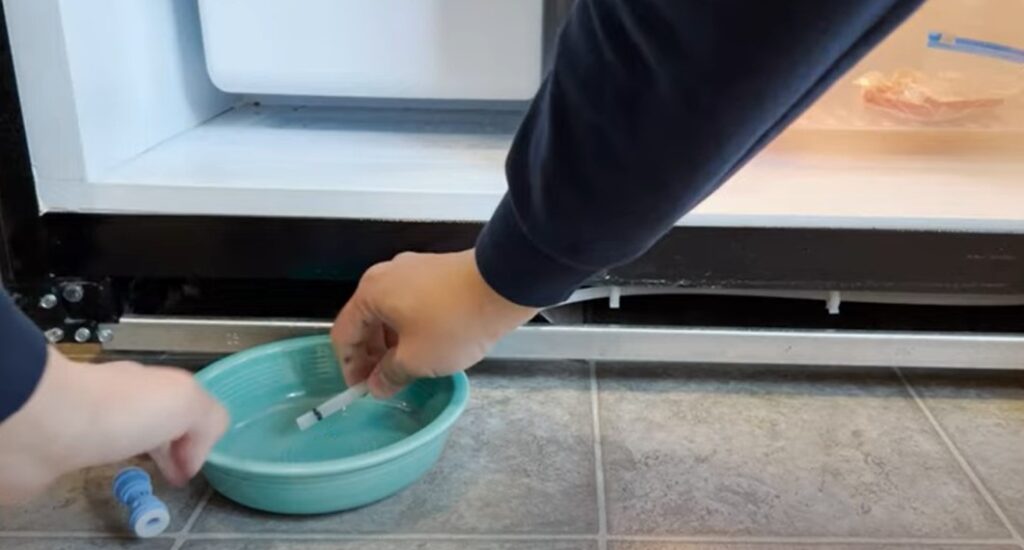
By recognizing these common signs, you’ll be better equipped to diagnose the problem with your water dispenser and potentially resolve it on your own or seek professional help.
Remember, a functioning water dispenser provides convenience, promotes hydration, and enhances energy efficiency. Understanding the common signs of a malfunctioning dispenser helps you stay aware of potential issues and take the necessary steps to rectify them.
Keep reading our blog for more information on troubleshooting and fixing your fridge water dispenser. Let’s get that water flowing again!
Troubleshooting Tips For A Non-Functioning Water Dispenser
Having trouble with your water dispenser in your fridge? Discover troubleshooting tips to fix the issue and get your water flowing again. From checking the power supply to inspecting the water line, these simple steps can help you identify and resolve the problem.
Is your refrigerator’s water dispenser failing to dispense water?
Don’t worry, we’ve got you covered with some troubleshooting tips to help you get your water dispenser up and running again. Before you go ahead and call a technician, try these simple steps to save yourself time and money.
Check The Water Supply:
- Ensure that the water supply is turned on: Make sure that the water supply valve, usually located behind the refrigerator, is fully turned on. If it’s partially or completely closed, this could be the reason for the water dispenser not working.
- Verify the water pressure: Low water pressure can also lead to a non-functioning water dispenser. Check the water pressure in your home by testing other faucets or water outlets. If the pressure is low, you may need to contact a plumber to resolve the issue.
Inspect The Water Line:
- Examine the water line for any obstructions: Over time, the water line can become blocked by dirt, debris, or minerals. Inspect the water line for any clogs or kinks that may be preventing water from flowing properly.
- Thaw any frozen water lines: If the water dispenser has stopped working during winter months, it’s possible that the water line has frozen. Allow the refrigerator to defrost for a few hours and check if the water dispenser starts working again.
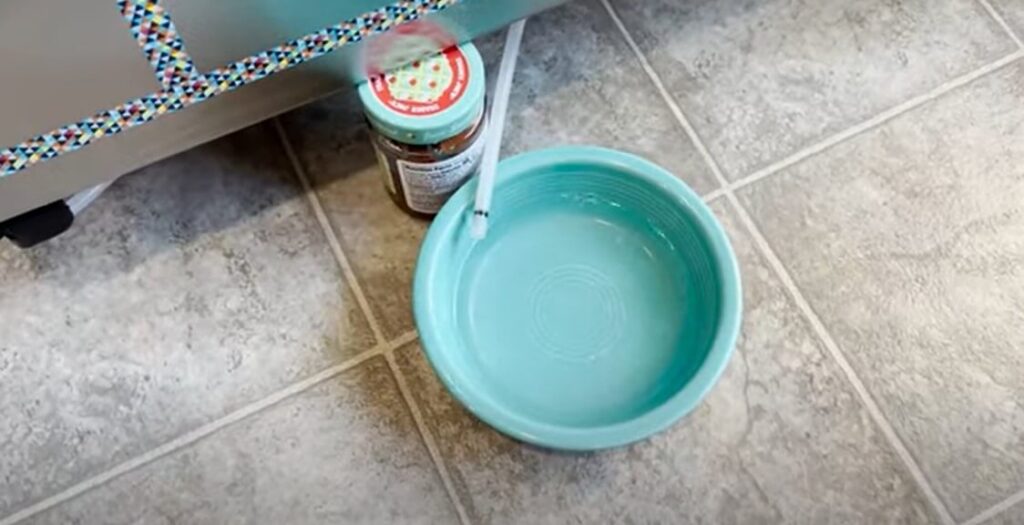
Examining The Water Filter:
- Check the status of the water filter: A clogged or expired water filter can cause the water dispenser to stop functioning. Locate the water filter and inspect its condition. If it’s dirty or past its recommended lifespan, replace it with a new one.
- Follow manufacturer’s instructions for filter installation: Ensure that the water filter is properly installed according to the manufacturer’s instructions. An incorrectly installed filter may restrict water flow and hinder the dispensing process.
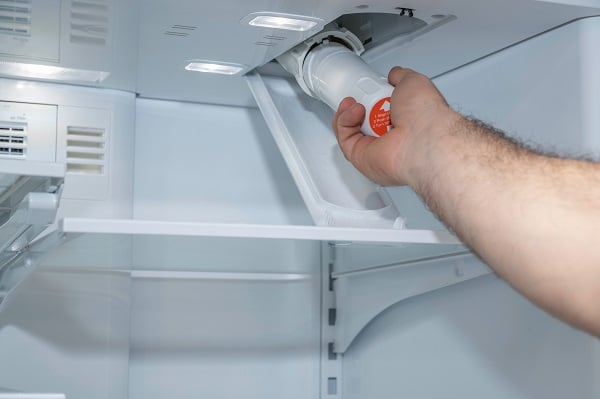
By following these troubleshooting tips, you can often resolve the issue of a non-functioning water dispenser in your refrigerator without the need for professional assistance.
Remember to always consult the refrigerator’s manual for specific instructions related to your model. Happy troubleshooting!
The Freeze-Up Problem In Water Dispensers In Fridge
Water dispensers in fridges may stop working due to freeze-up problems. This issue can be addressed by defrosting the dispenser, checking the thermostat, and ensuring proper ventilation.
Are you experiencing the frustration of a water dispenser in your fridge abruptly stopping to work? It’s not an uncommon issue for many households.
One of the main culprits behind this problem is a frozen water line. In this section, we will discuss how to identify the signs of a frozen water line, how to thaw it out, and preventive measures to prevent future freeze-ups.
Identifying Signs Of A Frozen Water Line
To determine whether your water dispenser is suffering from a frozen water line, be on the lookout for the following signs:
- No water coming out: If you notice that no water is flowing when you try to dispense it, it may be a sign of a frozen water line.
- Reduced water flow: Sometimes, a partially frozen water line can result in a reduced water flow. If you’re experiencing a weaker or slower stream of water, this could be the cause.
- Frozen or icy dispenser components: Take a look inside your fridge’s water dispenser. If you notice ice buildup or frozen components, it indicates a frozen water line.
Thawing Out The Frozen Water Line
If you’ve identified the presence of a frozen water line, it’s time to thaw it out. Here are a few methods to help you resolve the issue:
- Unplug the fridge: Start by unplugging your refrigerator from the power source. This step is crucial for safety and preventing any electrical mishaps.
- Remove the water filter: Take out the water filter from the fridge, as it may contribute to the clogging of the water line.
- Defrost the fridge: Open the fridge and freezer doors and leave them open to allow the warm air to circulate. This will help melt the ice inside the water line. You can also place towels soaked in warm water around the water line to expedite the thawing process.
- Check the water line: Once you’ve given it ample time to thaw, inspect the water line for any remaining ice or blockages. Clear away any obstructions using a soft cloth or a small brush.
- Reassemble and test: Once the water line is clear, reassemble the necessary components and plug the fridge back in. Test the water dispenser to ensure that it’s now working properly.
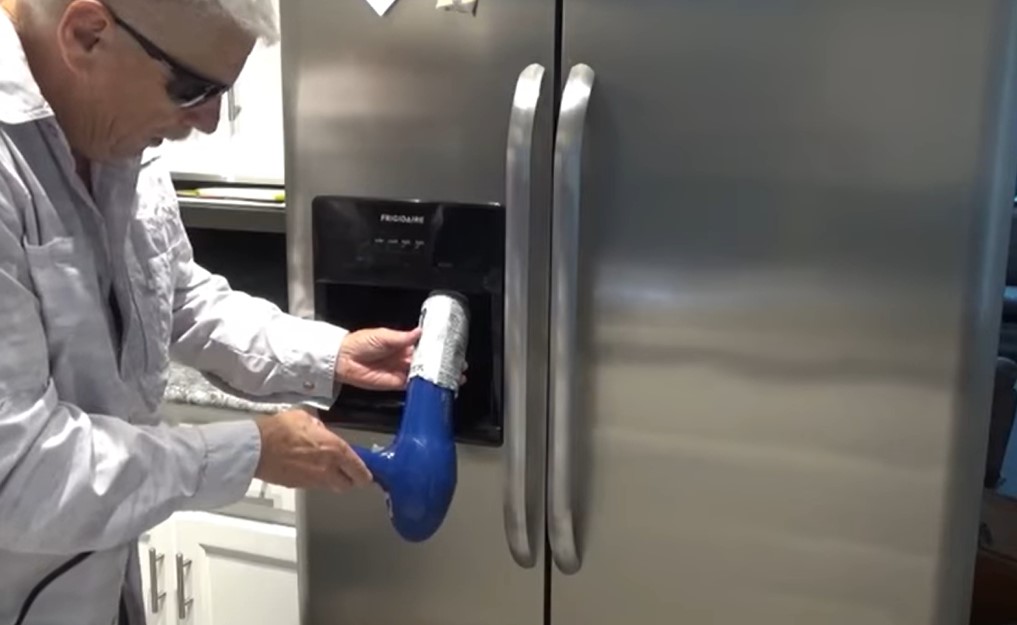
Preventive Measures To Avoid Future Freeze-Ups
Now that you’ve successfully addressed the freeze-up problem in your water dispenser, it’s wise to take preventive measures to avoid encountering the same issue in the future. Consider the following steps:
- Adjust the temperature: Ensure that the temperature in your fridge is set appropriately. Setting the temperature too low can lead to freezing of the water line.
- Regularly replace water filters: Changing the water filter on a regular basis helps maintain proper water flow and reduces the risk of clogging.
- Keep the freezer door closed: Avoid leaving the freezer door open for extended periods, as this can introduce warm air and increase the chances of a frozen water line.
- Run the dispenser regularly: Use the water dispenser on a regular basis to prevent stagnation and freezing of the water line.
- Insulate the water line: If you reside in a particularly cold climate, insulating the water line inside your fridge can provide an added layer of protection against freezing.
By following these simple steps, you can effectively address the freeze-up problem in your water dispenser and minimize the risk of encountering it in the future.
Dealing With Clogged Water Filters
If your water dispenser in the fridge stops working, it may be due to clogged water filters. Ensure smooth water flow by regularly cleaning or replacing filters to maintain optimal functionality.
Are you facing issues with your water dispenser in the fridge? A common reason for your water dispenser to stop working is a clogged water filter. Water filters play a vital role in keeping the water clean and free from impurities.
In this section, we will understand the importance of water filters, learn how to identify signs of a clogged water filter, and know the steps to remove and replace the water filter.
Understanding The Role Of Water Filters:
- Water filters are designed to remove impurities and contaminants from the water.
- They ensure that the water you drink and use for various purposes is clean and safe.
- The filter traps sediments, chemicals, and bacteria, providing you with fresh and pure water.
- It helps improve the taste and odor of the water, making it more enjoyable to consume.
Identifying Signs Of A Clogged Water Filter:
- Slow water flow: If you notice a decrease in the speed of water flow from your dispenser, it could be a sign of a clogged water filter.
- Reduced ice production: Clogged filters can affect the ice-making process in your fridge, leading to decreased ice production.
- Unpleasant taste or odor: If the water from your dispenser tastes or smells strange, it might indicate a clogged water filter.
- Cloudy or discolored water: A clogged filter can cause the water to appear cloudy or have a different color.
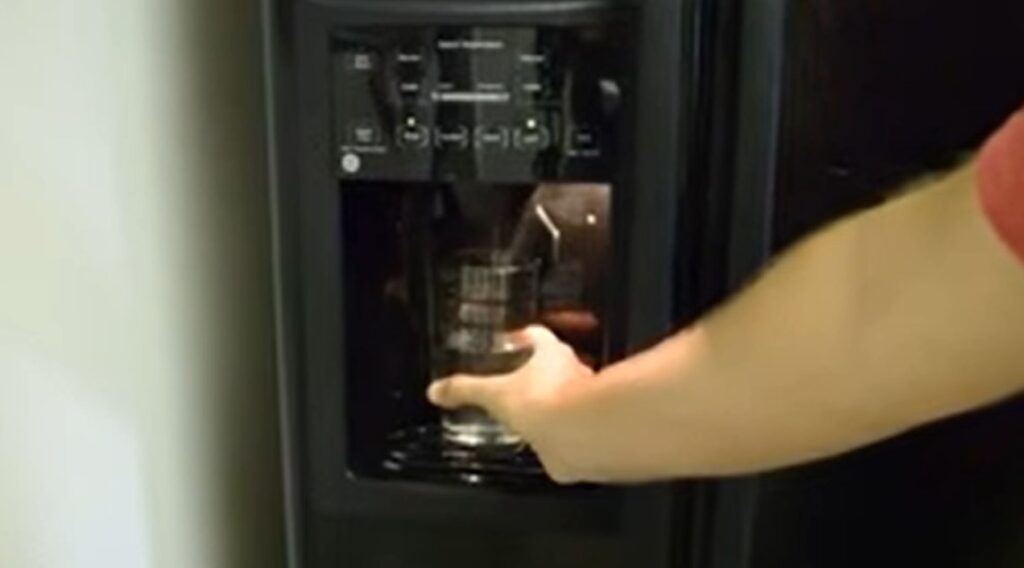
Removing And Replacing The Water Filter:
- Refer to your fridge’s manual to locate the water filter housing and the steps to remove the filter.
- Turn off the water supply to the fridge to prevent any leaks during the replacement process.
- Remove the old water filter by twisting it counterclockwise or following the manufacturer’s instructions.
- Before inserting the new filter, make sure to remove any protective covers or seals.
- Insert the new filter into the housing and rotate it clockwise until it locks into place.
- Turn on the water supply and run water through the dispenser to flush out any air or loose particles.
- It is recommended to replace the water filter every six months or according to the manufacturer’s instructions.
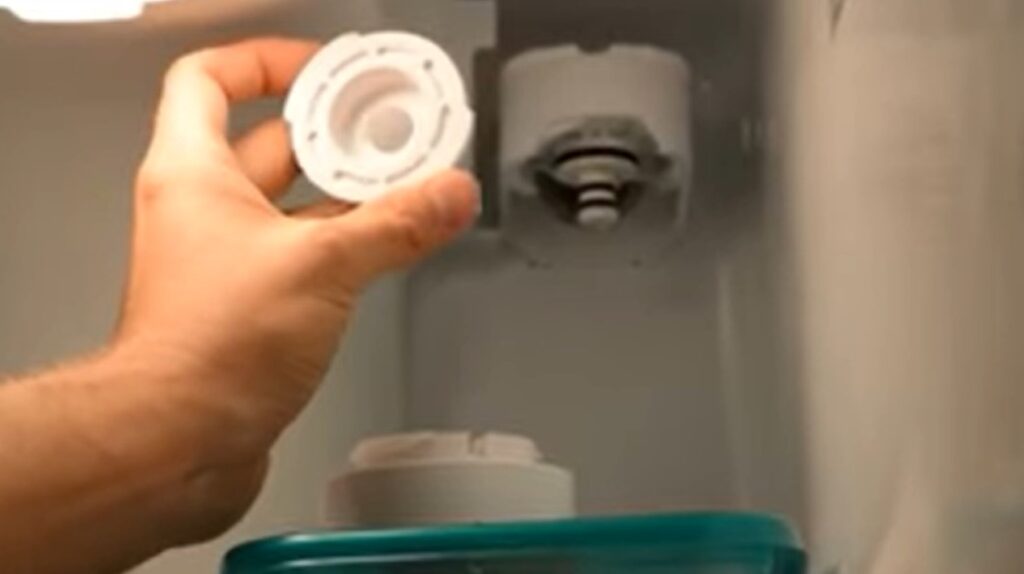
Now that you understand the role of water filters, know how to identify signs of a clogged filter, and have the steps to remove and replace the filter, you can ensure a properly functioning water dispenser in your fridge. Regular maintenance and filter replacements will ensure that you continue to enjoy clean and fresh water every day.
Fixing Faulty Water Valve
Is your water dispenser in the fridge not working? It could be due to a faulty water valve. Fixing the water valve can help resolve this issue and get your water dispenser back to functioning properly.
Identifying Signs Of A Faulty Water Valve
- If you notice that the water dispenser in your fridge is not working as it should, it could be due to a faulty water valve. Here are some signs to look out for:
- No water flow: One of the clear indicators of a faulty water valve is when there is no water coming out of your fridge’s water dispenser, even though it should be dispensing water.
- Weak water pressure: In case the water flow is weak or the water pressure is lower than usual, it may be a sign that your water valve needs attention.
- Leaks: Another indication of a faulty water valve is if you notice any water leaks around the water dispenser area. This could be a result of a malfunctioning valve not properly controlling the water flow.
- Flooding or overflowing: If you find that the water dispenser continues to dispense water even with the lever released, it’s likely that the water valve is stuck open, causing flooding or overflowing.
- Strange noises: A faulty water valve may produce unusual sounds when the water dispenser is being used, such as humming or buzzing. This can be a sign of internal valve issues.
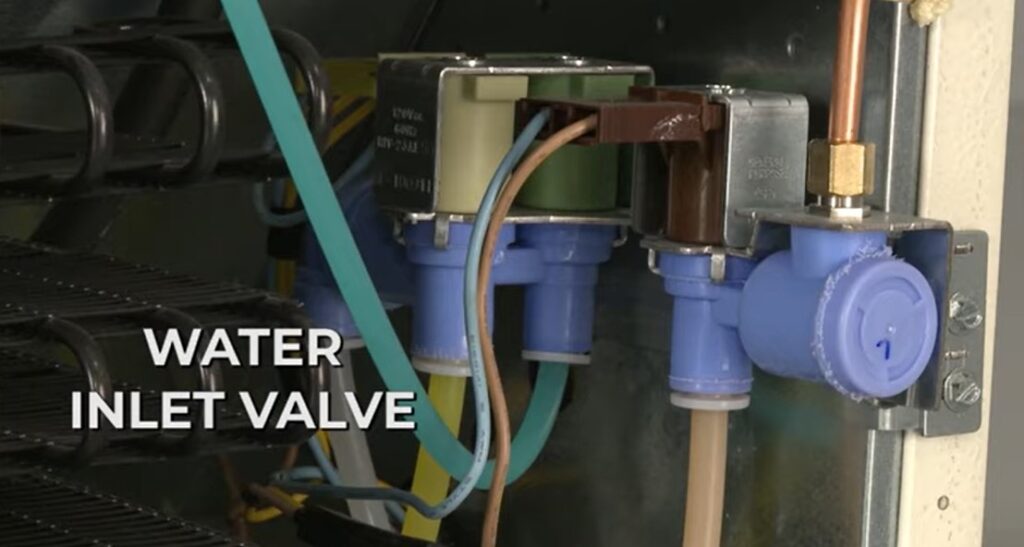
Replacing The Water Valve
- If you have determined that the water valve in your fridge is the cause of the dispenser malfunction, follow these steps for replacement:
- Turn off the water supply: Before starting any repair, it’s important to shut off the water supply to your fridge to prevent any potential water leaks or spills.
- Unplug the fridge: For safety purposes, unplug your refrigerator from the power source to avoid electrical shocks during the replacement process.
- Locate the water valve: The water valve is typically located at the back of the fridge, near the bottom. It may be connected to the main water line or the refrigerator’s water filter.
- Disconnect the water supply line: Remove the water supply line that is connected to the valve. Do this carefully to avoid any damage to the line or valve.
- Remove the faulty water valve: Unscrew or detach the old water valve from the refrigerator. Make sure to keep track of any screws or mounting brackets that need to be reattached later.
- Install the new water valve: Take the new water valve and securely attach it to the refrigerator, ensuring it is properly aligned with the water line and any mounting brackets.
- Reconnect the water supply line: Once the new water valve is in place, reattach the water supply line, ensuring it is tightly connected and doesn’t leak.
- Replug the fridge and turn on the water supply: After confirming that the water supply line is properly connected, plug the fridge back in and turn on the water supply. Test the water dispenser to ensure it is working correctly.
Preventive Measures To Maintain The Water Valve
- To avoid future issues with your fridge’s water valve and ensure its longevity, consider the following preventive measures:
- Regular cleaning: Clean the water valve and its components periodically to remove any mineral deposits or debris that may accumulate over time. This helps maintain proper water flow and prevents clogs.
- Check the water filter: If your refrigerator has a water filter, make sure to replace it according to the manufacturer’s recommendations. A clogged or expired water filter can put additional strain on the water valve.
- Monitor water pressure: Keep an eye on the water pressure from the dispenser. If you notice any sudden changes or drops in pressure, it may indicate an issue with the water valve or another component.
- Professional maintenance: Consider scheduling regular maintenance check-ups with a professional technician. They can inspect and service your fridge’s water valve, ensuring optimal performance and identifying any potential problems early on.
By paying attention to the signs of a faulty water valve, promptly replacing it when necessary, and implementing preventive measures, you can keep your fridge’s water dispenser functioning smoothly. So, don’t ignore any issues with water flow or leaks and take action to fix the problem.
Resolving Electrical And Control Board Malfunctions
Water dispensers in fridges occasionally stop working due to electrical and control board malfunctions. If your fridge’s water dispenser is not functioning, it may be necessary to resolve these issues to restore its operation.
Water dispensers in fridges are convenient for getting a quick glass of cold water or filling up a pitcher. However, they can sometimes stop working, leaving you parched and frustrated. One common reason for this issue is electrical and control board malfunctions.
In this section, we will discuss how to check the power supply to the water dispenser, inspect the control board for issues, and how to replace or repair the control board if necessary.
Checking Power Supply To The Water Dispenser:
- Ensure that your fridge is plugged in and has power.
- Check if the water dispenser lights or display are working.
- If the lights and display are not functioning, try plugging the fridge into a different outlet or resetting the circuit breaker.
- Test the outlet with another appliance to verify if it is working properly.
- If the power supply to the fridge is the issue, contact an electrician to diagnose and fix the problem.
Inspecting The Control Board For Issues:
- Locate the control board, which is usually located at the back of the fridge or behind the dispenser panel.
- Check for any visible signs of damage, such as burnt or loose wires, discolored components, or melted parts.
- Ensure all cables and connectors are securely connected.
- Use a multimeter to test the control board for continuity and check if it is receiving the proper voltage.
- If you notice any issues with the control board, it may need to be replaced or repaired.
Replacing Or Repairing The Control Board:
- Consult the fridge’s user manual or manufacturer’s website for information on how to access and remove the control board.
- Disconnect any power sources before proceeding with the replacement or repair.
- If the control board is easily accessible and replaceable, order a new one from the manufacturer or a trusted supplier.
- Follow the instructions provided to install the new control board carefully.
- In case the control board requires repair, consult a professional or contact the manufacturer for guidance.
- If you are unsure about replacing or repairing the control board yourself, it is advisable to seek assistance from a qualified technician.
Remember, electrical and control board malfunctions can be tricky to diagnose and fix. If you are not confident in your abilities, it is best to consult a professional technician who can identify and resolve the issue effectively.
Seeking Professional Help
If your water dispenser in the fridge stops working, it’s crucial to seek professional help. An expert can diagnose and fix the issue efficiently, providing you with a functional and convenient water dispenser once again.
Knowing When To Call A Professional
- If you’ve tried troubleshooting your water dispenser in the fridge but it still isn’t working, it may be time to seek the help of a professional technician. Here are some signs that indicate it’s time to call in the experts:
- If the water dispenser is completely unresponsive and doesn’t dispense any water or make any noise when activated, it could indicate a more serious issue that requires professional attention.
- If you notice leaks or puddles of water around the water dispenser area, it’s important to have it checked by a professional to prevent further damage to your fridge and potential water damage to your kitchen floor.
- Strange noises or unusual vibrations coming from the water dispenser can be a sign of a mechanical or electrical problem that should be looked at by a technician.
- If the water dispenser intermittently stops and starts working, it can be frustrating and indicate an underlying issue that needs to be addressed by a professional.
Choosing A Reputable Technician
- When it comes to getting your water dispenser in the fridge fixed, it’s essential to choose a reputable and experienced technician to ensure a quality repair job. Here are some tips to help you find the right professional:
- Ask for recommendations from friends, family, or neighbors who have had similar issues with their water dispensers. Personal recommendations can often lead you to trustworthy technicians who have a proven track record of delivering excellent service.
- Do some online research and check out customer reviews and ratings of technicians or repair companies in your area. Look for testimonials that vouch for their expertise and reliability.
- Verify that the technician or repair company is licensed and insured. This will protect you from any liability in case of accidents or damage during the repair process.
- Get multiple quotes from different technicians or repair companies to compare prices and ensure you’re getting a fair deal. However, remember not to compromise quality for the sake of low prices.
Understanding The Repair Process And Costs
- Before hiring a professional technician to fix your water dispenser in the fridge, it’s important to understand the repair process and associated costs. Here’s what you need to know:
- A reputable technician will start by diagnosing the problem with your water dispenser. This may involve inspecting the internal mechanisms, checking for blockages, or testing electrical components.
- Once the problem is identified, the technician will discuss the repair options with you and provide an estimate of the costs involved. This may include the price of replacement parts, labor charges, and any additional fees.
- Keep in mind that the repair costs can vary depending on the nature of the problem and the make and model of your fridge. Complex issues may require more time and resources, resulting in higher repair costs.
- Be wary of technicians who quote unusually low prices or try to upsell unnecessary repairs. It’s always a good idea to ask for a detailed breakdown of the costs to ensure transparency.
- Remember to inquire about any warranty or guarantee offered by the technician or repair company. A reputable professional will stand behind their work and provide you with peace of mind.
By knowing when to call a professional, choosing a reputable technician, and understanding the repair process and costs, you can ensure that your water dispenser in the fridge gets the right attention it needs to start working again efficiently.
FAQs: Why Water Dispenser Stops Working In Fridge
Why Did My Refrigerator Water Dispenser Suddenly Stop Working?
The sudden stoppage of the refrigerator water dispenser could be due to a clogged water filter, impeding water flow. Check if the filter needs to be replaced. Another possible reason is a frozen water line caused by extremely low temperatures.
Defrosting the freezer may resolve the issue. Additionally, inspect the water inlet valve to ensure it is functioning properly. A malfunctioning valve can disrupt water supply to the dispenser. Lastly, examine the dispenser control board for any signs of damage or loose connections.
If necessary, replace the control board to restore normal functioning.
How Do You Unclog A Refrigerator Water Dispenser?
To unclog a refrigerator water dispenser, turn off the water supply and unplug the fridge. Remove the water filter and check for any debris or blockages. Clean the filter and reinstall it. Next, check the water line for kinks or damage and straighten or replace as needed.
If there is still a clog, try using a small brush or pipe cleaner to remove any obstructions from the dispenser nozzle. Fill a cup with water and push the dispenser button to flush out any remaining debris. Finally, plug the fridge back in and turn the water supply back on.
Test the dispenser to ensure it is working properly.
Why Isn’t The Water Coming Out Of My Fridge Cold?
If the water from your fridge is not cold enough, there could be several reasons for this issue. First, check if the temperature setting for the fridge is set appropriately. Ensure it is set to a colder temperature to improve the water’s coldness.
Another reason could be a malfunctioning water filter. Replace the water filter if it’s been a while since the last replacement. Additionally, the fridge’s water line might be clogged or frozen, hindering proper water flow. Inspect the water line and defrost it if necessary.
Lastly, check if the fridge’s cooling system is working efficiently. If the cooling system is faulty, professional assistance may be required to repair or replace the system. Remember to regularly maintain your fridge to ensure uninterrupted cold water flow.
How Do I Fix The Water Flow In My Refrigerator?
To fix the water flow in your refrigerator, follow these steps:
1. Check the water supply valve, ensuring it is fully open.
2. Inspect the water filter for clogs or debris and replace if necessary.
3. Examine the water inlet valve for any issues or blockages; a faulty valve may require replacement.
4. Clean the water dispenser and ice maker lines with a solution of vinegar and water to remove any buildup or mineral deposits.
5. Verify that the water pressure is adequate; low water pressure can affect the flow and may require a plumber’s assistance.
6. Assess the water line for any leaks or damage; replace if needed.
7. If the problem persists, consult the refrigerator’s user manual for troubleshooting tips or contact a professional technician for further assistance.
Conclusion
When your water dispenser stops working in the fridge, it can be a frustrating experience. However, understanding the common causes and troubleshooting steps can help you resolve the issue quickly. Firstly, check if there is a clog in the water line or a malfunctioning valve.
Secondly, ensure that the water filter is not clogged and needs replacement. Also, inspect the water inlet valve and ensure it is functioning properly. Additionally, be cautious of freezing in the water line and use a hairdryer to thaw any ice blockages.
Regular maintenance and cleaning are key to keeping your water dispenser in good working order. By following these guidelines, you can prevent future issues and enjoy clean and refreshing water from your fridge dispenser. Remember, a little proactive care can go a long way in ensuring the continued functionality of your water dispenser.
